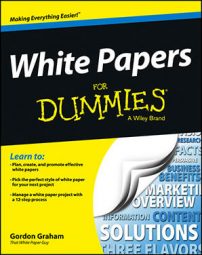It’s difficult to narrow down what the actual standards are or a white paper. Unfortunately, anyone can call anything a white paper. And people do. No laws or regulations can stop them. For instance, consider the length. Today’s typical white paper is six to eight pages long, a little shorter than in past years.
Consider the format. The typical white paper looks more appealing than a technical manual yet not as slick as a brochure. White papers are typically distributed as a PDF on the web. But many are printed for sales calls, press kits, and trade shows, and some are posted online as HTML or split up to make microsites.
If no firm standards exist, don’t white papers have at least a few shared conventions? Yes, some conventions have been slowly emerging over the years. A white paper must
Be built from narrative text
Be at least five pages long in portrait format
Provide educational, practical, and useful content, not a sales pitch
Provide well-researched facts, not just opinions
Be used before a sale, not after a sale
Include an introduction or executive summary
If you can call any information published by any B2B vendor for any purpose a white paper, then why even bother with that term? Why not just call everything information or marketing bumf?

